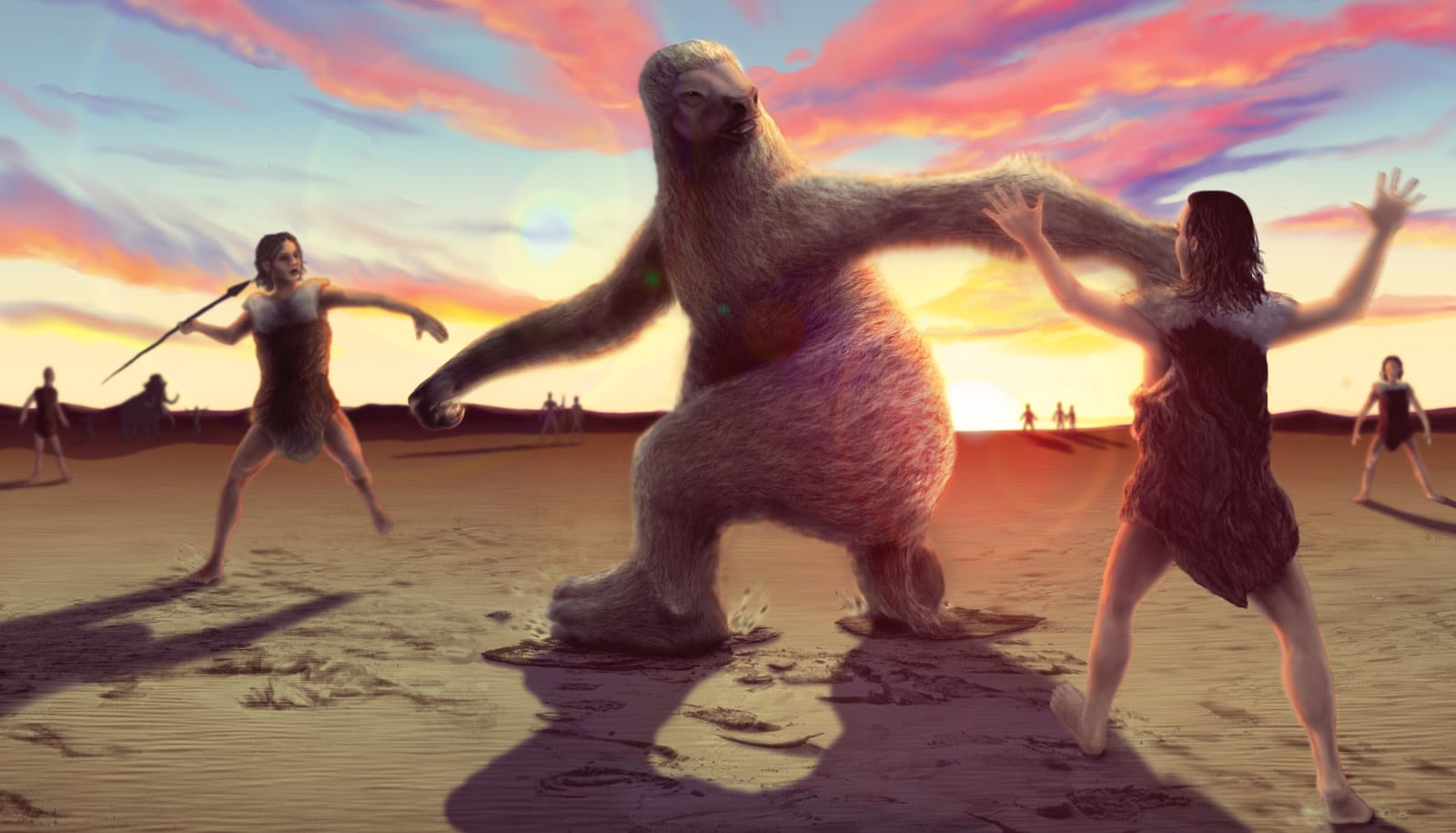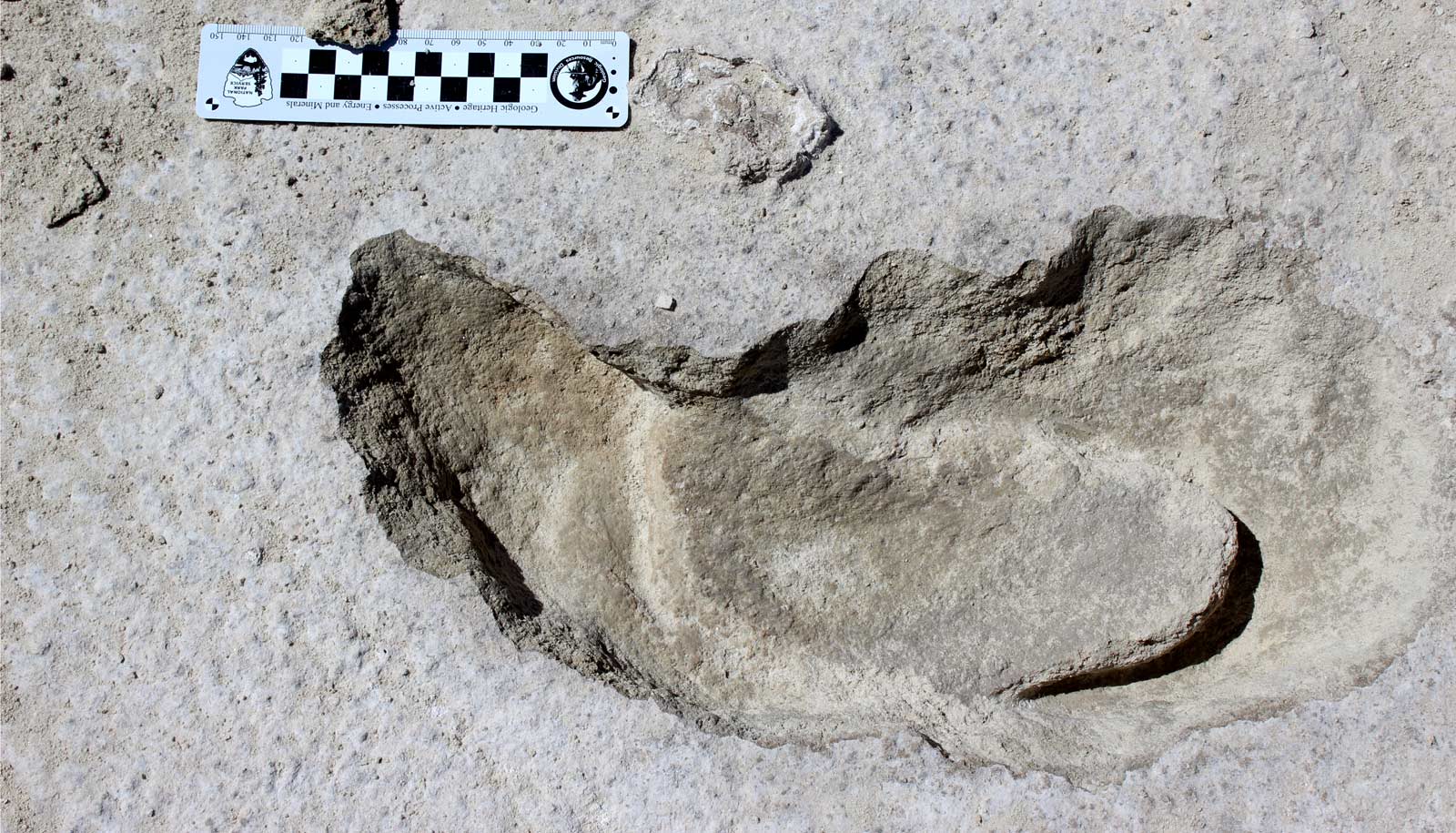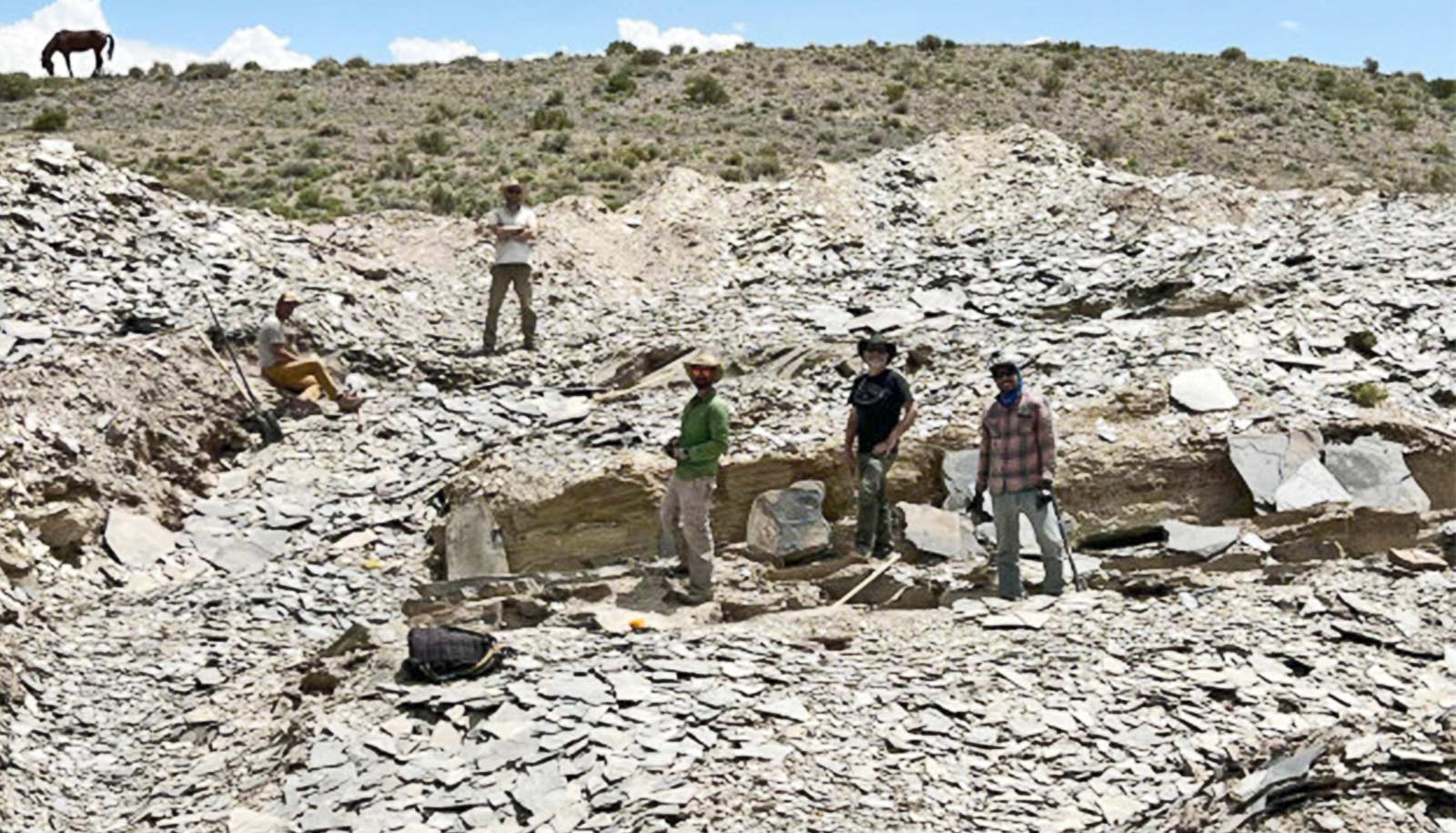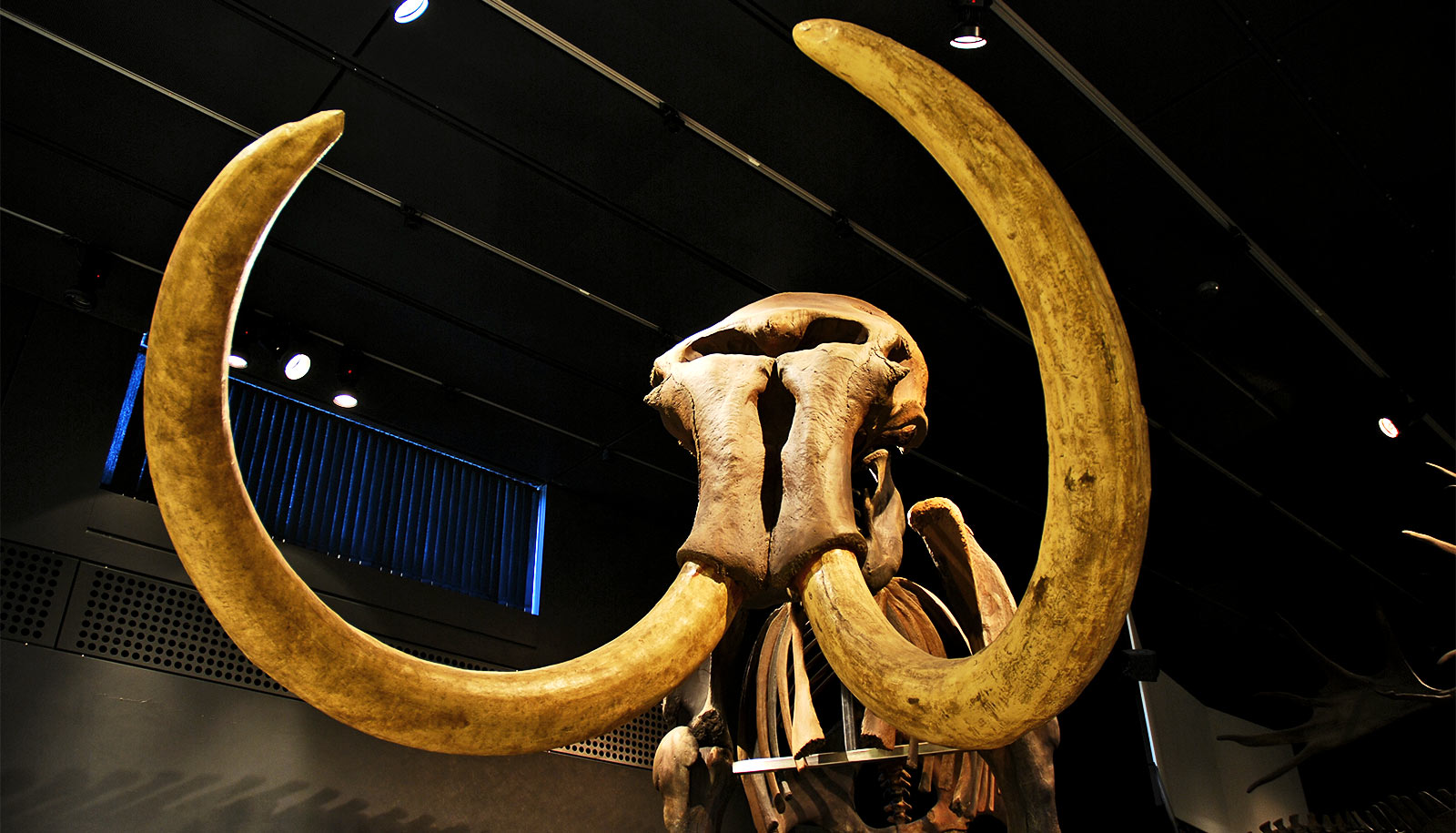Footprints within footprints at New Mexico’s White Sands National Monument may be the first evidence that humans hunted giant, razor-clawed ground sloths at the end of the Ice Age.
The White Sands trackway—a series of tracks and footprints that animals and humans left as long as tens of thousands of years ago—suggests that a human followed a sloth, purposely stepping in its tracks, says David Bustos, the park naturalist who discovered the trackway 10 years ago.
“This wasn’t just one human footprint and one sloth footprint. Somebody was walking along, purposely putting their feet in the sloth tracks,” says Vance Holliday, a professor of anthropology and geosciences at the University of Arizona.
“It’s pretty amazing to see that sort of fleeting evidence of behavior. You don’t see that kind of thing very often in the really early archeological record.”

7 feet tall and muscley
The footprints may indicate that ancient humans stalked the sloth, says coauthor Matthew Bennett, a professor of environmental and geographical sciences at Bournemouth University in England.
“…was this someone approaching with stealth to deliver a killer blow while the sloth was being distracted? We believe so.”
“So we ask why? Adolescent exuberance? Possible, but unlikely. We see interesting circles of sloth tracks in these stalked trackways, which we call ‘flailing circles.’ These record the rise of the sloth on its hind legs and the swing of its fore legs, presumably in a defensive motion.”
At seven to eight feet tall, with tightly muscled legs tipped with wolverine-like claws, the sloth would tear apart any hunter on direct approach. But in addition to the human tracks following the sloth, more human tracks are present a safe distance away, suggesting a community action that made use of distraction and misdirection to gain the upper hand in deadly close-quarter combat.
Bennett believes the tracks show the sloth was turning and swinging at the stalker.
“We also see human tracks on tip toes approach these circles; was this someone approaching with stealth to deliver a killer blow while the sloth was being distracted? We believe so,” Bennett says.
“It was also a family affair, as we see lots of evidence of children’s tracks and assembled crowds along the edge of the flat playa. Piecing the puzzle, we can see how sloth were kept on the flat playa by a horde of people and distracted by a hunter stalking the sloth from behind, while another crept forward and tried to strike the killing blow as the animal turned.”
Ghost fossils
While early humans in North America hunted mammoths and mastodons—and their relatives, gomphotheres—the idea that they may also have hunted giant sloths, which could weigh between 600 and 1,000-plus pounds, is new, Holliday says.
“It seems like there’s some sort of interaction between humans and sloths because of the similarities of the weathering of the footprints, and because there are no deposits between the human and sloth tracks,” Holliday says. “This has never been documented in North America, so that’s telling us something. We didn’t have very good documentation of sloths in the area—and that late in time.”
There is a great deal more to learn in years to come, says research team member Vince Santucci, senior paleontologist with the National Park Service.
“And we’re pretty motivated to keep looking and studying. These fossils are called ghost fossils for a couple of reasons. One, they’re difficult to see at times because of different atmospheric and moisture conditions—and the light has to be just right. And second, the fossil footprints are ephemeral. Once the overlying sand dunes move and reveal the tracks, they start to weather away and can be gone in months.”
High on the list of things to be learned is the question of just when this episode of hunters and hunted took place. The Ice Age ended about 11,700 years ago and the fossil record of ground sloths indicates they were extinct by this time.
Scientists used relative dating to estimate a minimum age for the fossils found at the site.
“Since the footprints are contemporaneous with animals that died out by the end of the Pleistocene, relative dating tells us those footprints are at least 11,700 years old, or older,” Santucci says.
Holliday’s research focuses on ancient Lake Otero, which preserved the tracks. Just a couple hundred yards from where the human and sloth tracks were discovered is a key exposure of old deposits, and he hopes he can help date the tracks more precisely, using carbon dating he’s done at the lakebed site.
“What we need to do is try to trace the deposits with the tracks into the exposed lakebed to see if we can figure out where the layer with the tracks is, relative to our carbon 14 dates,” he says.
The findings appear in Science Advances.
Source: University of Arizona



